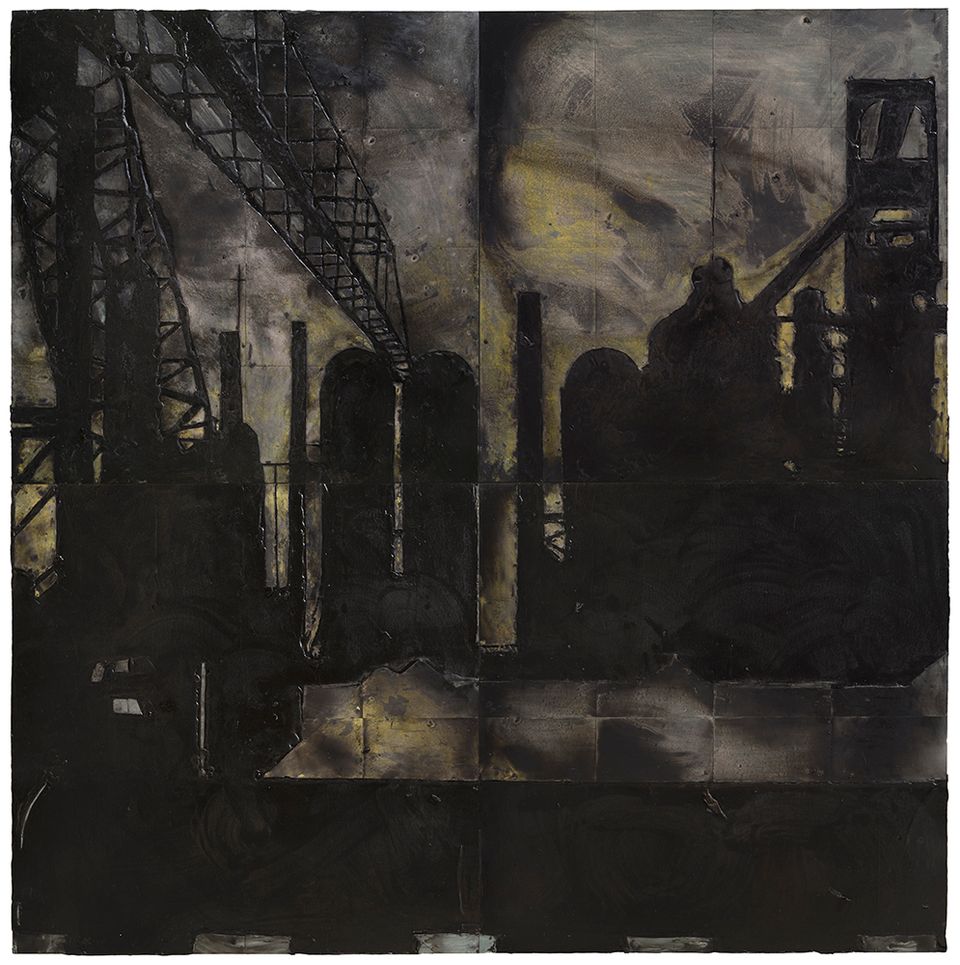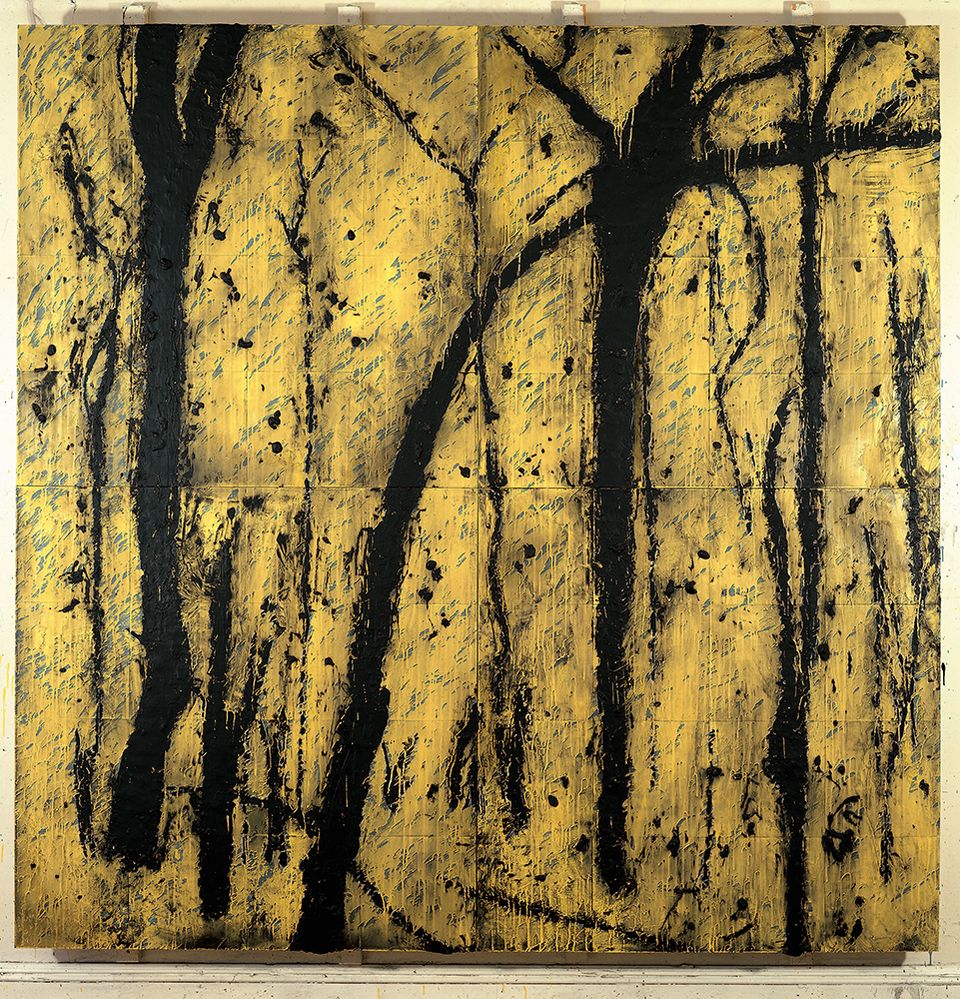Donald Sultan: The Disaster Paintings

Donald Sultan, Early Morning May 20 1986, 1986, latex and tar on tile over Masonite. Private collection, New York. © Donald Sultan
In the 1980s, Donald Sultan (born 1951) began his industrial landscape series the Disaster Paintings. He worked with the subject for nearly a decade, using images of actual events drawn from the daily newspaper. Sultan’s Disaster Paintings illustrate robust, man-made structures — such as industrial plants and train cars — as fragile constructs that can be undone by catastrophic events. Distinguished for combining this subject matter with industrial materials, such as tar and Masonite tiles, the Disaster Paintings exemplify in both media and concept the vulnerability of the most progressive, manufactured elements of modern culture.
Description
Sultan’s Disaster Paintings echo the drama of their subjects in their large scale and great physicality. The series presents a confluence of seeming dichotomies, merging the materials of Minimalism with representational painting, stylistically combining figuration and abstraction, and making references to high and low culture, ranging from topical events drawn from newspaper imagery to nineteenth-century art-historical iconography.
This exhibition is the first to focus on the series and includes twelve signature paintings from 1984 to 1990, including Plant, May 29, 1985 from the Hirshhorn Museum and Sculpture Garden, which will be on view only at SAAM. The exhibition is organized by Alison Hearst, assistant curator at the Modern Art Museum of Fort Worth; Sarah Newman, the James Dicke Curator of Contemporary Art, is coordinating the exhibition at SAAM.
“The series speaks to the impermanence of all things. The largest cities, the biggest structures, the most powerful empires—everything dies. Man is inherently self-destructive, and whatever is built will eventually be destroyed... That’s what the works talk about: life and death.”
–Donald Sultan
Visiting Information
Tour Schedule
Videos
Credit
Donald Sultan: The Disaster Paintings is organized by the Modern Art Museum of Fort Worth. The presentation at the Smithsonian American Art Museum is generously supported by Elizabeth Broun, the Gene Davis Memorial Fund, and the James F. Dicke Family Endowment.
Online Gallery
Publication
The exhibition catalogue, published by Prestel, was available for purchase in the museum store ($49.95).

























